How to Polish a Boat
Part 1 of 3:
Cleaning Your Boat
-
 Scrub the boat with a solution of detergent and warm water. Work on your boat while it's on a trailer so you can polish the area that's usually underwater. Combine 1 cup (240 ml) of detergent made for boats and 1 gallon (3.8 L) of warm water. Dip a microfiber towel or a sponge in the solution and clean off the entire body of the boat. Apply firm pressure as you scrub the boat so it lifts dirt or debris stuck on the surface.[1]
Scrub the boat with a solution of detergent and warm water. Work on your boat while it's on a trailer so you can polish the area that's usually underwater. Combine 1 cup (240 ml) of detergent made for boats and 1 gallon (3.8 L) of warm water. Dip a microfiber towel or a sponge in the solution and clean off the entire body of the boat. Apply firm pressure as you scrub the boat so it lifts dirt or debris stuck on the surface.[1]- You can buy boat detergent at outdoors stores or specialty boat shops.
- Avoid using cleaners that have phosphate since it can create harmful runoff that pollutes water.[2]
-
 Rinse the surface and dry it with a microfiber cloth. Use a garden hose or a damp microfiber cloth to remove any detergent that's left on the boat's surface. Make sure there isn't any cleaner left on the fiberglass since it could dry and create a residue that's difficult to remove. Wipe the area in circular motions with a soft microfiber towel until it's dry to the touch.[3]
Rinse the surface and dry it with a microfiber cloth. Use a garden hose or a damp microfiber cloth to remove any detergent that's left on the boat's surface. Make sure there isn't any cleaner left on the fiberglass since it could dry and create a residue that's difficult to remove. Wipe the area in circular motions with a soft microfiber towel until it's dry to the touch.[3]- If you aren't in a rush to polish your boat, you can let it air-dry instead.
-
 Remove grease with a rag soaked in acetone. Dip a cleaning rag into the acetone and wring it out completely. Rub the rag in a circular pattern against the section of the boat you're working on to lift any greasy oils stuck on the gelcoat. When the rag gets dirty, fold it so you have a clean surface. Replace the rag whenever it gets completely dirty.[4]
Remove grease with a rag soaked in acetone. Dip a cleaning rag into the acetone and wring it out completely. Rub the rag in a circular pattern against the section of the boat you're working on to lift any greasy oils stuck on the gelcoat. When the rag gets dirty, fold it so you have a clean surface. Replace the rag whenever it gets completely dirty.[4]- You can buy acetone from your local hardware store.
- If you can afford it, use methyl ethyl ketone (MEK) solvent instead of acetone since it can be more efficient.
- Acetone is very flammable, so be sure to store it away from heat sources or open flames.
Warning: Acetone can cause eye and nose irritation if you inhale the fumes. Wear a facemask and safety glasses while working with it.[5]
-
 Brush hull cleaner onto any stains and rinse it off. Dip a 1 in (2.5 cm) paintbrush in the hull cleaner and wipe off any excess on the side of the can. Spread the hull cleaner directly onto the fiberglass wherever there are visible stains or scum, which are usually the most prominent on the sides or bottom of the boat. Allow the cleaner to set for 10 minutes before rinsing it off with clean water.[6]
Brush hull cleaner onto any stains and rinse it off. Dip a 1 in (2.5 cm) paintbrush in the hull cleaner and wipe off any excess on the side of the can. Spread the hull cleaner directly onto the fiberglass wherever there are visible stains or scum, which are usually the most prominent on the sides or bottom of the boat. Allow the cleaner to set for 10 minutes before rinsing it off with clean water.[6]- Hull cleaner is a strong chemical cleaner that's designed to remove scum and algae. You can buy some at a specialty boat shop or online.
-
 Rub wet 2,000-grit sandpaper on the boat if it's heavily oxidized. If you still notice heavy discoloration or a cloudy appearance, soak a piece of 2,000-grit sandpaper in warm water and wring out any excess water. Spray the surface of the boat with water from a spray bottle to help lubricate it. Apply light pressure as you rub the sandpaper in horizontal strokes against the fiberglass to help lift up the oxidation. Work in 1 ft × 3 ft (30 cm × 91 cm) sections, and wipe the boat clean with a rag as you go.[7]
Rub wet 2,000-grit sandpaper on the boat if it's heavily oxidized. If you still notice heavy discoloration or a cloudy appearance, soak a piece of 2,000-grit sandpaper in warm water and wring out any excess water. Spray the surface of the boat with water from a spray bottle to help lubricate it. Apply light pressure as you rub the sandpaper in horizontal strokes against the fiberglass to help lift up the oxidation. Work in 1 ft × 3 ft (30 cm × 91 cm) sections, and wipe the boat clean with a rag as you go.[7]- Pressing too hard with the sandpaper could damage the finish underneath the gelcoat.
- If the sandpaper glides easily over the surface, you can stop sanding since you've removed most of the oxidation.
Part 2 of 3:
Applying Boat Polish
-
 Wear gloves, safety glasses, and a facemask to protect yourself. Since you're working with power tools and boat polish can irritate your skin, be sure to wear safety equipment. Look for a facemask that covers your mouth and nose completely so you don't breathe any harmful fumes. Put on safety glasses so polish doesn't splash into your eyes. Opt for rubber work gloves to get a better grip while you're working and keep your hands dry.[8]
Wear gloves, safety glasses, and a facemask to protect yourself. Since you're working with power tools and boat polish can irritate your skin, be sure to wear safety equipment. Look for a facemask that covers your mouth and nose completely so you don't breathe any harmful fumes. Put on safety glasses so polish doesn't splash into your eyes. Opt for rubber work gloves to get a better grip while you're working and keep your hands dry.[8]- Polishing your boat without safety equipment can lead to irritation from chemicals or serious injury from the buffer.
-
 Attach a wool pad to a variable-speed orbital buffer. Look for an electric buffer that has multiple speeds varying from 600–2,000 RPM so you can clean your boat the most efficiently. Opt for one that has an orbital head, which means it moves in random patterns so it doesn't leave swirl marks or burn through the gel coat. Use a 6 in (15 cm) wool pad and screw it onto the base of the buffer.[9]
Attach a wool pad to a variable-speed orbital buffer. Look for an electric buffer that has multiple speeds varying from 600–2,000 RPM so you can clean your boat the most efficiently. Opt for one that has an orbital head, which means it moves in random patterns so it doesn't leave swirl marks or burn through the gel coat. Use a 6 in (15 cm) wool pad and screw it onto the base of the buffer.[9]- You can get variable-speed orbital buffers from your local hardware store.
- While you can polish your boat by hand, it will take longer to finish and you may get tired.
-
 Apply heavy cut polish and water to a 1 ft × 3 ft (30 cm × 91 cm) area. Stir the polish with a 1 in (2.5 cm) paintbrush to make sure it's thoroughly mixed together. Drag the brush in long horizontal strokes over the area you're polishing so you have 3 stripes that are evenly spaced apart. Spray the area you're polishing with cold water from a spray bottle to help lubricate the surface so you can move the buffer easily.[10]
Apply heavy cut polish and water to a 1 ft × 3 ft (30 cm × 91 cm) area. Stir the polish with a 1 in (2.5 cm) paintbrush to make sure it's thoroughly mixed together. Drag the brush in long horizontal strokes over the area you're polishing so you have 3 stripes that are evenly spaced apart. Spray the area you're polishing with cold water from a spray bottle to help lubricate the surface so you can move the buffer easily.[10]- Heavy cut polish helps smooth out larger scratches and dents on the surface.
- You can buy heavy cut boat polish online or from specialty sporting stores.
- Avoid applying the polish directly to the buffer pad since it may not spread as evenly over the surface.
-
 Buff the polish onto the boat until it turns clear. Start on the buffer's slowest speed setting and press it flat against the body of the boat. Turn the buffer on and apply light pressure as you move the buffer side-to-side over the area. After 5–10 seconds, slowly increase the speed of the buffer until it reaches 2,000 RPM to work the polish into the surface. Keep running the buffer until the polish is clear on the boat.[11]
Buff the polish onto the boat until it turns clear. Start on the buffer's slowest speed setting and press it flat against the body of the boat. Turn the buffer on and apply light pressure as you move the buffer side-to-side over the area. After 5–10 seconds, slowly increase the speed of the buffer until it reaches 2,000 RPM to work the polish into the surface. Keep running the buffer until the polish is clear on the boat.[11]- Overlap each of your horizontal strokes by 1–2 in (2.5–5.1 cm) to ensure you polish the entire surface.
- Keep the buffer against the boat when you turn it off so excess polish doesn't splatter anywhere.
- Never hold the buffer in the same spot for longer than 2–3 seconds since you could melt through the gelcoat and damage the finish underneath.
Warning: Be careful not to touch any stainless steel parts of your boat with the buffer pad since it will create a black mark that may transfer onto the fiberglass.
-
 Wipe off excess compound with a clean microfiber cloth. Fold a clean microfiber cloth in half and go over the area with horizontal and vertical strokes. If the cloth gets dirty, flip it over and use the clean side or replace it. Continue wiping your boat until you don't see any visible residue on the surface.[12]
Wipe off excess compound with a clean microfiber cloth. Fold a clean microfiber cloth in half and go over the area with horizontal and vertical strokes. If the cloth gets dirty, flip it over and use the clean side or replace it. Continue wiping your boat until you don't see any visible residue on the surface.[12]- Polish left on your boat can dry and leave a film on the surface.
-
 Go over the area again with fine polish and a waffle foam pad. Unscrew the wool pad from the buffer and replace it with a 6 in (15 cm) pad of soft waffle foam. Use your paintbrush to make 3 stripes of fine polish over the area and mist it with more water. Start your buffer around 600 RPM and gradually increase the speed as you spread the polish. Continue working until it's clear before wiping off any excess residue with a soft cloth.[13]
Go over the area again with fine polish and a waffle foam pad. Unscrew the wool pad from the buffer and replace it with a 6 in (15 cm) pad of soft waffle foam. Use your paintbrush to make 3 stripes of fine polish over the area and mist it with more water. Start your buffer around 600 RPM and gradually increase the speed as you spread the polish. Continue working until it's clear before wiping off any excess residue with a soft cloth.[13]- You can buy fine boat polish online or from specialty boating stores.
- Fine polish will remove any scratches or swirls left from the heavy cut polish.
-
 Continue polishing the boat in 1 ft × 3 ft (30 cm × 91 cm) sections. Work around your boat's fiberglass in small sections at a time. Apply strips of heavy cut polish first and buff it into your boat. Follow up with fine polish to remove any smaller scratches or pockmarks still left on the surface.[14]
Continue polishing the boat in 1 ft × 3 ft (30 cm × 91 cm) sections. Work around your boat's fiberglass in small sections at a time. Apply strips of heavy cut polish first and buff it into your boat. Follow up with fine polish to remove any smaller scratches or pockmarks still left on the surface.[14]- Trying to polish your entire boat at the same time may leave streaks or residue on the surface
Part 3 of 3:
Waxing the Surface
-
 Wait until a cloudy day or work in a shaded area. Avoid working on sunny days since it can melt the wax or cause it to dry out. If you have your boat outside, choose to work on a cool, overcast day or move it into an area that gets shade throughout the day. Otherwise, keep your boat inside of a garage to avoid the sun completely.[15]
Wait until a cloudy day or work in a shaded area. Avoid working on sunny days since it can melt the wax or cause it to dry out. If you have your boat outside, choose to work on a cool, overcast day or move it into an area that gets shade throughout the day. Otherwise, keep your boat inside of a garage to avoid the sun completely.[15]- You can wax your boat any time after you polish it, but avoid putting it back in the water until you do since it could get damaged easily.
- Wax will turn hazy and dry too quickly on hot surfaces, which could leave a swirled residue on the boat.
-
 Rub boat wax onto the surface in circular motions with a foam applicator. Dip a foam applicator pad or a soft cleaning rag into a tub of paste wax made for boats. Work the wax into a 1 ft × 3 ft (30 cm × 91 cm) area in a circular pattern so you have an even layer. Continue rubbing the wax onto your boat until it's clear.[16]
Rub boat wax onto the surface in circular motions with a foam applicator. Dip a foam applicator pad or a soft cleaning rag into a tub of paste wax made for boats. Work the wax into a 1 ft × 3 ft (30 cm × 91 cm) area in a circular pattern so you have an even layer. Continue rubbing the wax onto your boat until it's clear.[16]- You can buy boat wax online or from specialty boating stores.
Tip: Avoid applying wax to your entire boat at the same time since it will dry out too much before you're able to remove it.
-
 Allow the wax to dry until it has a hazy finish. Leave your boat alone after applying the wax and let it air-dry. After 5–10 minutes, check the wax to see if it has a cloudy or hazy finish. If it doesn't, check it again within 10 minutes to see if it's dry. Otherwise, you can move on.[17]
Allow the wax to dry until it has a hazy finish. Leave your boat alone after applying the wax and let it air-dry. After 5–10 minutes, check the wax to see if it has a cloudy or hazy finish. If it doesn't, check it again within 10 minutes to see if it's dry. Otherwise, you can move on.[17] -
 Buff the haze with a lint-free cloth to remove the haze. Use a soft microfiber cloth and rub the waxed area in circular motions to lift up any excess. Apply firm pressure as you wipe the wax away so your boat has a clear, shiny finish. As the cloth gets dirty, fold it so you're always wiping your boat with a clean surface. Continue working until you don't see any residue on the boat.[18]
Buff the haze with a lint-free cloth to remove the haze. Use a soft microfiber cloth and rub the waxed area in circular motions to lift up any excess. Apply firm pressure as you wipe the wax away so your boat has a clear, shiny finish. As the cloth gets dirty, fold it so you're always wiping your boat with a clean surface. Continue working until you don't see any residue on the boat.[18]- Clean off all of the wax, or else it will leave a residue that's difficult to clean off as it dries further.
-
 Wax the rest of the boat in 1 ft × 3 ft (30 cm × 91 cm) areas. Work around your entire boat in small sections at a time so the wax doesn't leave any residue. Rub the wax into the fiberglass until it looks clear and allow it to dry for at least 5 minutes. Buff each section clean before starting a new area.[19]
Wax the rest of the boat in 1 ft × 3 ft (30 cm × 91 cm) areas. Work around your entire boat in small sections at a time so the wax doesn't leave any residue. Rub the wax into the fiberglass until it looks clear and allow it to dry for at least 5 minutes. Buff each section clean before starting a new area.[19]- Wax will dry out if you leave it on your boat for too long, which may leave streak marks.
4 ★ | 2 Vote
You should read it
May be interested
- How to Paint an Aluminum Boat
 if you want to give your aluminum boat a fresh coat of paint, there are some simple steps you can take to ensure the paint job looks great. sand the boat to create an even surface, and use soap and water to wash any dirt off. prime the...
if you want to give your aluminum boat a fresh coat of paint, there are some simple steps you can take to ensure the paint job looks great. sand the boat to create an even surface, and use soap and water to wash any dirt off. prime the... - How to Register a Boat
 if you're planning to get a motorized boat, make sure you follow the law regarding registration. just like cars, states require boats to be registered. registration lets the authorities know who's operating boats legally on a given...
if you're planning to get a motorized boat, make sure you follow the law regarding registration. just like cars, states require boats to be registered. registration lets the authorities know who's operating boats legally on a given... - Close up of the world's first electric powered boat, glides smoothly and flies over the water
 candela speed boat ab, sweden engineers have successfully built the first electric powered motorboat in the world. this special boat is called candela seven and works by the power supplied by the lithium-ion battery.
candela speed boat ab, sweden engineers have successfully built the first electric powered motorboat in the world. this special boat is called candela seven and works by the power supplied by the lithium-ion battery. - How to Prepare a Boat for Fishing
 fishing from a boat provides certain advantages to fishing from shore, notably the ability to reach more fishing places during a fishing outing than the section of the lake or stream adjacent to a single shore. however, buying a fishing...
fishing from a boat provides certain advantages to fishing from shore, notably the ability to reach more fishing places during a fishing outing than the section of the lake or stream adjacent to a single shore. however, buying a fishing... - How to Clean a Boat Water Tank
 having a fresh water system on your boat is super convenient if you tend to go on long boating trips. you can use it to cook, clean, or even take showers while you're out on the water. unfortunately, boat water tanks can become home to...
having a fresh water system on your boat is super convenient if you tend to go on long boating trips. you can use it to cook, clean, or even take showers while you're out on the water. unfortunately, boat water tanks can become home to... - How to Create a Two‐Player Boat Racing Game in Scratch
 this step-by- step guide will teach you how to create a boat racing game using the program scratch. once you've finished programming this simple game, the two boats will race along using keystroke commands. open up scratch.
this step-by- step guide will teach you how to create a boat racing game using the program scratch. once you've finished programming this simple game, the two boats will race along using keystroke commands. open up scratch. - How to polish leather shoes clean and beautiful every day
 leather shoes that want to be beautiful and shiny need to be cleaned and polished regularly or they will quickly get old after only a few days of use.
leather shoes that want to be beautiful and shiny need to be cleaned and polished regularly or they will quickly get old after only a few days of use. - How to Sail a Boat
 for centuries, the sea has captured the spirits of sailors and adventurers all over the world. in his poem 'sea fever', john masefield claimed that all he needed was 'a tall ship and a star to steer her by' to feel complete. breaking into...
for centuries, the sea has captured the spirits of sailors and adventurers all over the world. in his poem 'sea fever', john masefield claimed that all he needed was 'a tall ship and a star to steer her by' to feel complete. breaking into... - How to Polish a Foil Ball
 the foil ball challenge refers to the process of compacting and sanding a roll of aluminum foil to create a shiny, metal ball. this process is pretty time-consuming since it can take 4-5 hours to pound, buff, and polish the ball, but the...
the foil ball challenge refers to the process of compacting and sanding a roll of aluminum foil to create a shiny, metal ball. this process is pretty time-consuming since it can take 4-5 hours to pound, buff, and polish the ball, but the... - Common cleaning methods
 cleaning household items is one of the things that helps to keep the cozy look and intimate feelings for your home.
cleaning household items is one of the things that helps to keep the cozy look and intimate feelings for your home.
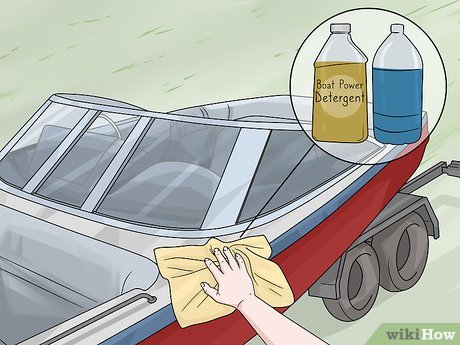
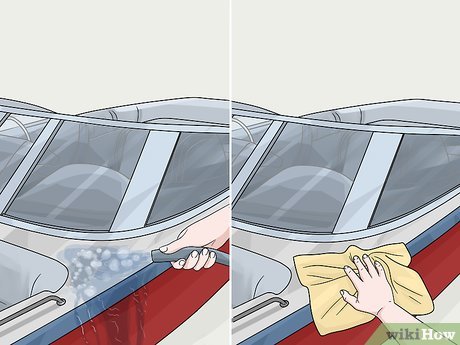
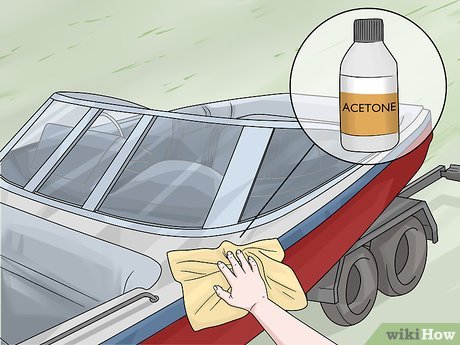
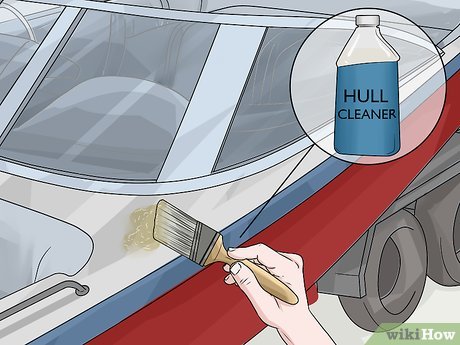
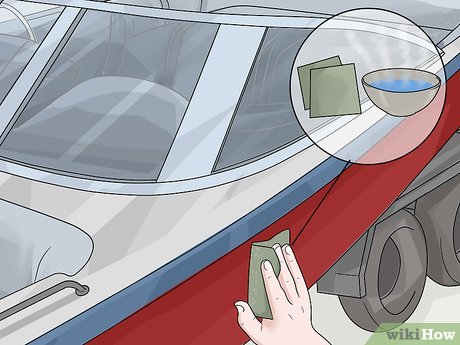
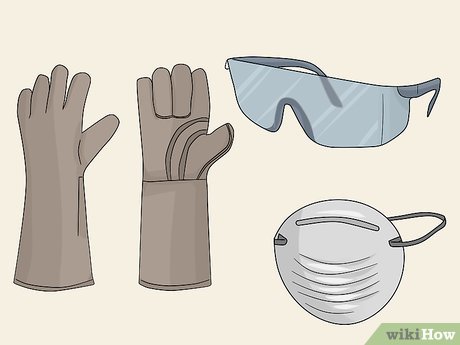
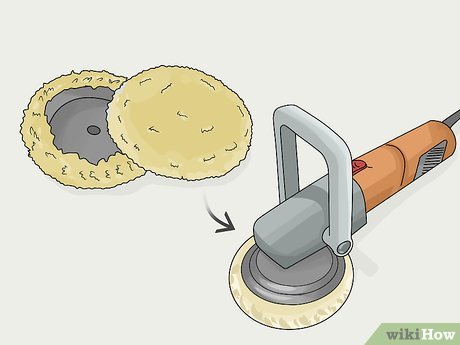
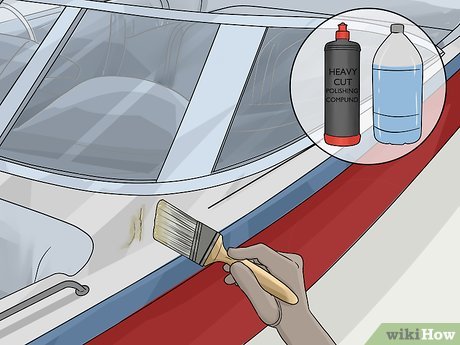
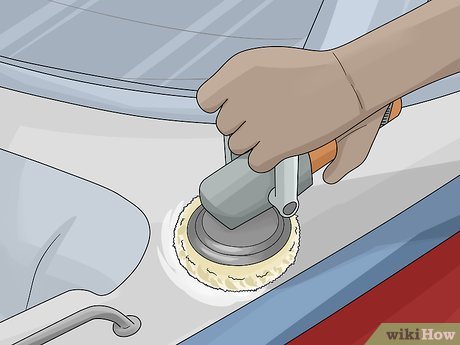

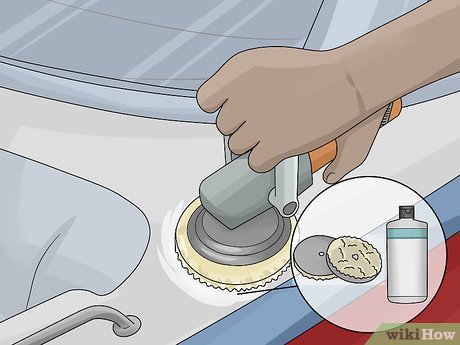
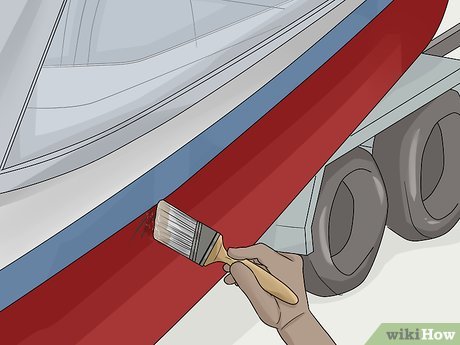

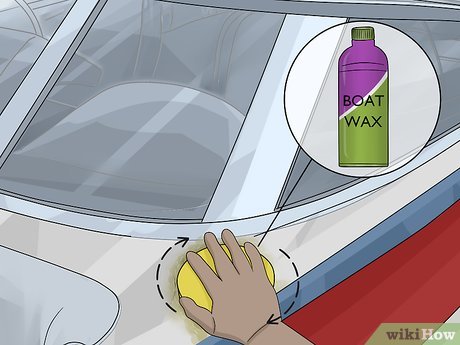
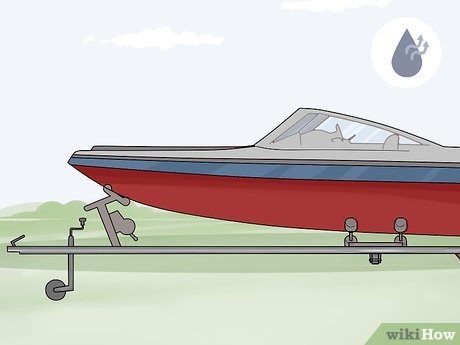

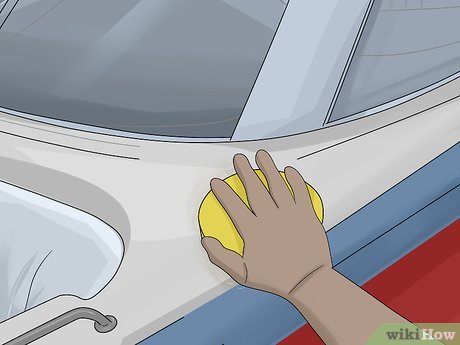










 How to Avoid Costly Computer Service Calls
How to Avoid Costly Computer Service Calls How to Protect an iPhone 11
How to Protect an iPhone 11 How to Encrypt Files
How to Encrypt Files How to Protect a TV from Humidity
How to Protect a TV from Humidity How to Use Ferrite Beads
How to Use Ferrite Beads How to Be Prepared for Common Technology Problems
How to Be Prepared for Common Technology Problems